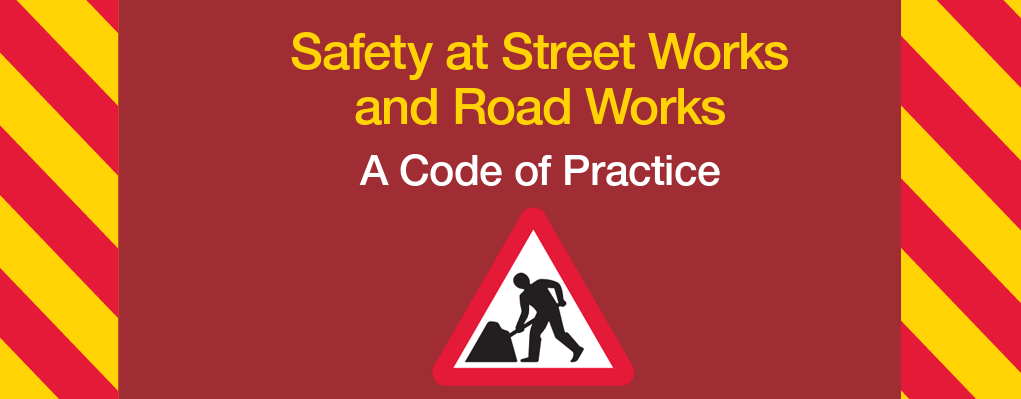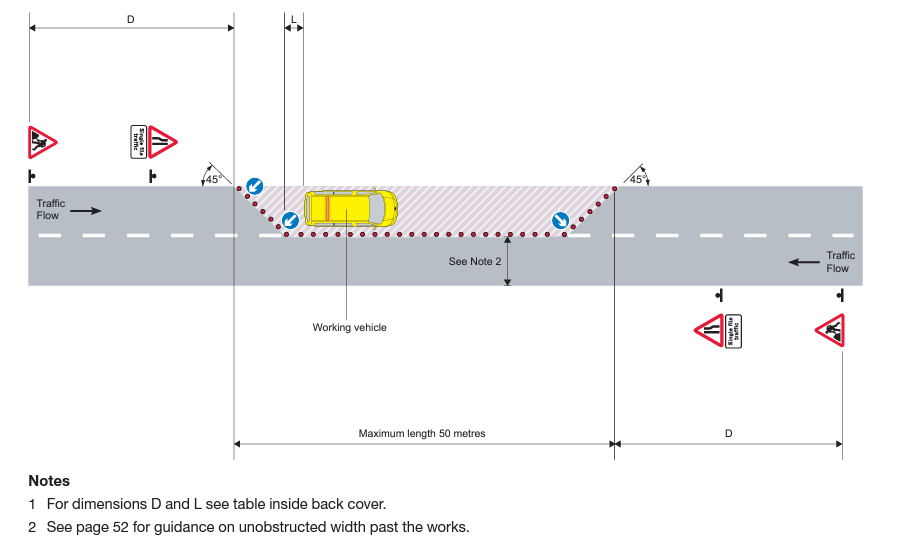One of the ‘key certificates’ for a NRSWA or Street Works qualification is the Signing, Lighting and Guarding certificate (Also referred to as unit O1, previously called Unit 2 and before that Chapter 8). Being a key certificate means that you must have it to complete any kind of works on the roads. If you take the Signing, Lighting and Guarding O1 course, the NRSWA Red Book will become very familiar!
The NRSWA Red Book Code of Practice
The ‘Red Book’ isn’t the formal name. It is actually called ‘Safety at Street Works and Road Works A Code of Practice’. The book provides information on best practices, specifications, and standards that need to be followed when signing, lighting or guarding is set up on the highways. It is crucial that this code of practice is followed to ensure that both the public and those working on site are a kept safe.
The NRSWA Red Book code of practice covers various aspects, such as planning and risk assessment, training needed, equipment, what needs to be done before any work is started, and many examples of carriageway works and the signing, lighting and guarding needed in different situations.
The Red Book and the Signing, Lighting and Guarding certificate
When you take the Signing, Lighting and Guarding O1 course, you will refer to the NRSWA Red Book throughout your training and you are allowed to use it when you take your assessment at the end of your course. The Red Book is over 100 pages long – you are not expected to remember every possible scenario or all the rules of the code!
An Operative or Supervisor qualification (or both) can be taken for Signing, Lighting and Guarding certificate. Both Operatives and Supervisors will use the Code of Practice: Operatives for setting up the site and Supervisors for checking the set up.
Using the NRSWA Red Book in the assessment
Throughout your Signing, Lighting and Guarding O1 course, you will be continually assessed on the practical aspects and have a written assessment at the end. The test is taken on a touch screen tablet and the questions are multiple choice. As mentioned before, you can use your NRSWA Red Book to support you in answering the questions.
Below are some examples of they type of questions you might encounter in your assessment (they are not the same questions you might be asked):
- What is the minimum visibility distance from to the first sign for roadworks on a signal carriage wat with a speed limit of 50mph or more?
- What is the minimum height of cones when the speed limit is 40mph or less?
- What is the absolute minimum unobstructed width allowance vehicles for the setup diagram above? (The diagram is of a standard road with shuttle working).
Signing, Lighting and Guarding Training
As you can see, expecting you to remember all the details of distances and suitable set-ups would be unreasonable. Therefore, you can see why the Red Book code of practice for Street Works is required to be carried by anyone setting up signing, lighting, and guarding. By having a code of practice, the standard is set – every set-up should be to the same set of standards.
The training scheme was set up for the same reason. Everyone receives their training to the same standard; all courses are run to the same objectives, and leave the course with the same understanding.
Your training lasts for 5 years. At that point, you need to renew your qualification if you are going to continue to work on the highways. You can now take the reassessment up to 5 years after your Street Works Qualification has expired. After that, you would need to take the full course again.

